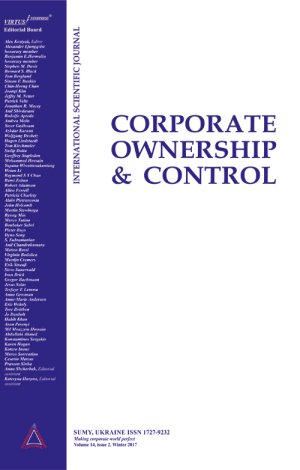
-
 Journal menu
Journal menu

- General information
- Editorial Board and External Reviewers
- Journal Policies
- Publication Ethics and Malpractice Statement
- Instructions for authors
- Paper reviewing
- Article processing charge
- Feedback from stakeholders
- Journal’s Open Access statement
- Order hard copies of the journal
- 50 most cited papers in the journal
THE IMPACT OF EXPENSING STOCK OPTIONS IN BLOCKHOLDER-DOMINATED FIRMS. EVIDENCE FROM ITALY
Download This ArticleAbstract
Accounting for stock options and executive remuneration have been one of the most debated and controversial issues in accounting regulation and corporate governance. The purpose of this study was to explore the impact of the mandatory adoption of IFRS 2 for accounting of stock options in Italian non financial listed companies. This paper has investigated the economic consequences of recording the cost of stock options at its fair value, in terms of its impact on the companies‟ reported earnings, and other key financial performance indicators, such as diluted earnings per share (EPS) and return on assets. The impact of the mandatory recording of the cost of stock options measured at its fair value has generally reduced the reported earnings and other key performance measures moderately. Despite some evidence of creative accounting which was found concerning the elusion of the substance over form principle for the accounting of stock options plans set up before 7th November 2002, accounting regulation has increased the level of disclosure by making companies report the “true” cost of stock options in their Profit or Loss. Based on 2004 stock-based remuneration disclosures of the value of options given to directors and employees, the expensing of options have a material negative impact on nearly 30 per cent of the sample firms‟ reported income and diluted EPS. The mandatory adoption of IFRS 2 seems to have relevant implications for corporate governance as it has reduced the information asymmetry between corporate insiders and outsiders on the “true” cost of stock-based remuneration.
Keywords: Stock Options, Blockholders, Italy
How to cite this paper: Melis, A., & Carta, S. (2008). The impact of expensing stock options in blockholder-dominated firms. Evidence from Italy. Corporate Ownership & Control, 6(1), 107-114. https://doi.org/10.22495/cocv6i1p11

















